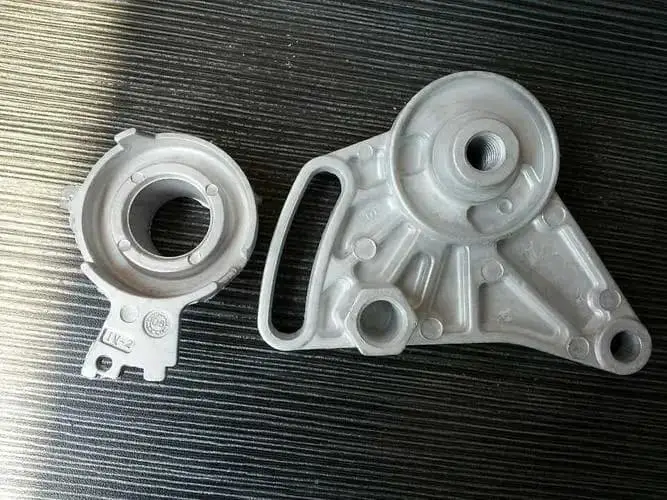1. Mechanical Polishing
Mechanical polishing is a method of smoothing a surface by removing the protrusions left after polishing through cutting and plastic deformation of the material surface.
This method is typically carried out using tools such as oil stones, wool wheels, sandpaper, etc., with manual operation being the primary means of polishing. For surfaces requiring high quality, the ultra-precision grinding and polishing method can be used.
Ultra-precision grinding and polishing involves the use of specially designed grinding tools that are tightly pressed onto the surface of the aluminum alloy die-casting part and rotated at high speed in a polishing liquid containing abrasive particles.
This technology can achieve a surface roughness of Ra0.008um, which is the highest among various polishing methods. This method is often used for optical lens molds.

2. Chemical Polishing
Chemical polishing is a method of obtaining a smooth surface by dissolving the microscopically raised parts of an aluminum alloy die-casting part in a chemical medium.
The main advantage of this method is that it does not require complex equipment, and it can be used to polish aluminum alloy die-casting parts with complex shapes and to polish many parts simultaneously, with high efficiency.
The core issue in chemical polishing is the formulation of the polishing solution. The surface roughness obtained by chemical polishing is generally several tens of microns.
3. Electrolytic Polishing
The basic principle of electrolytic polishing is similar to that of chemical polishing, which relies on selectively dissolving the tiny protrusions on the material surface to make it smooth.
Compared with chemical polishing, it can eliminate the influence of cathodic reaction and achieve better results. The process of electrochemical polishing can be divided into two steps:
(1) The macroscopic leveling dissolution product diffuses into the electrolyte, and the geometric roughness of the surface of the aluminum alloy die-casting part decreases, Ra>1μm.
(2) The micro-leveling anodic polarization improves the surface brightness, Ra<1um.
4. Ultrasonic Polishing
The aluminum alloy die-casting part is placed in a suspension of abrasives and placed in an ultrasonic field. With the oscillation of ultrasonic waves, the abrasive is used to polish the surface of the aluminum alloy die-casting part.
Ultrasonic processing has small macroscopic forces, which will not cause deformation of the aluminum alloy die-casting part, but the production and installation of the tooling are more difficult.
Ultrasonic processing can be combined with chemical or electrochemical methods. Based on the solution corrosion and electrolysis, ultrasonic vibration can be applied to stir the solution to make the dissolution product of the aluminum alloy die-casting part detach from the surface, and the corrosion or electrolyte near the surface is uniform; the cavitation effect of ultrasonic waves in the liquid can also suppress the corrosion process and facilitate surface polishing.
5. Fluid Polishing
Fluid polishing relies on high-speed flowing liquid and its carried abrasives to brush the surface of the aluminum alloy die-casting part to achieve polishing. Common methods include abrasive jet machining, liquid jet machining, and fluid dynamic grinding.
Fluid dynamic grinding is driven by hydraulic pressure, causing the liquid medium carrying abrasives to flow back and forth over the surface of the aluminum alloy die-casting part at high speed.
The medium mainly uses special compounds (polymeric substances) with good flowability at low pressure and mixed with abrasives. The abrasives can be made of silicon carbide powder.
6. Magnetic grinding and polishing
Magnetic grinding and polishing is a method of using magnetic abrasives to form an abrasive brush under the action of a magnetic field to grind and process aluminum alloy die-casting parts. This method has high processing efficiency, good quality, easy control of processing conditions, and good working conditions.
With the use of suitable abrasives, the surface roughness can reach Ra0.1μm.


